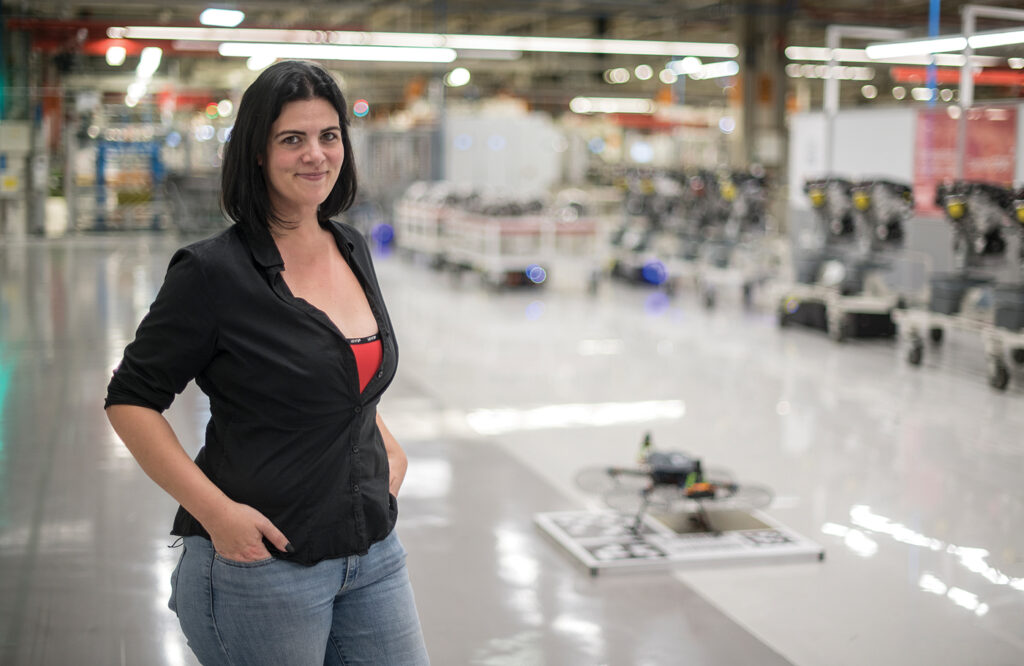Meet the factory of the future
Meet the factory of the future
SEAT and Eurecat are working on an innovative project that uses drones to transport parts autonomously to the production line
In SEAT’s factory in Martorell, Spain, a drone flies above the production lines. It’s part of a pioneering new project between SEAT and the Eurecat centre to explore the possibility of using drones to optimise logistics supply.
“Our goal with this project is to explore the advantages of autonomous vertical mobility to clear up space on the floor and shift lightweight parts in a faster, cleaner and more efficient way,” explains Alba Gavilán, head of digital execution & delivery in the production strategy department. “In the future, drones could autonomously transport components directly to the line.”
Flying on their own
Currently in its pilot phase, this formula was designed to be applied to an entire fleet of drones programmed to fly autonomously without the need for remote control. To move around the factory, the drones are built with a system of sensors that can detect the various stations on the shop floor.

“This involves a lot of mapping, programming and hours and hours of testing during the pilot project, also with obstacles, to train the drone for any kind of situation,” says Gavilán. The project first took shape in 2019, and the project management team has already logged more than 1 500 hours of work, even during the pandemic.
Goal: to optimise logistics
SEAT’s Martorell factory is already home to other groups of robots that move independently around the workshops – including automated guided vehicles (AGVs), autonomous mobile robots (AMRs) and outdoor drones that supply components.
The team working on the drones, called the SEAT Squadrone, realised early on that factory logistics could be further optimised by taking advantage of indoor airspace: “The advantage of drones is that they have unhindered vertical movement, which will greatly facilitate the transport of parts and complement the function that the AGVs perform on the ground,” Gavilán explains.
The future, approaching fast
For Jorge Luis Martínez, who is responsible for SEAT logistics innovation, the future will see an integration of the company’s current outdoor drones with the indoor drones to improve parts transportation both inside and outside the workshop. This logistics revolution could be used to transport electric car components in the future.
“We could connect nearby suppliers with the factory, extending their supply line directly to the production line and without having to rely on warehousing options for certain electric car components in the future. It’s a revolution in the logistics paradigm,” he says.
Published by
Focus on Transport
focusmagsa




